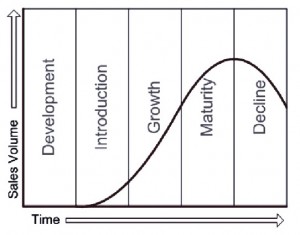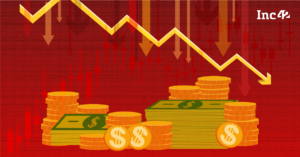Businesses of all sizes tend to go through a similar pattern of development or ‘lifecycle’. Although variation up and down the various phases is possible, we can pinpoint five major stages of the business lifecycle. Being aware of these stages can allow a business to identify which decisions to make at relative points of development, facilitating a healthier approach to the challenges of the business world and allowing dynamism in response to unpredictability.

The main stages of the lifecycle are as follows:
-
Start-up
This introductory phase includes early development of business and financial plans, gathering information and research on the sector and registering with the government as a legal entity. This stage is unstable as preliminary plans created in theory are tested against reality, with Fundsquire reporting that an estimated 60% won’t make it through their third trading year. However detailed the planning may be, this is a period of trial and error while working out where the business sits in the market and with consumers.
-
Growth
When a business has established itself in the sector by managing to take on clients and retain them, or target consumers and keep them interested, the business is stable. However, when a business needs to take on more employees to meet demand, the business is said to be growing. At this point, a business may even begin looking for acquisition opportunities or areas to expand, either geographically or economically.
-
Shakeout
Following massive growth in an industry, fierce competition emerges between businesses to retain consumers, where the market may be saturated by supply. A shakeout can occur in an industry where dominant businesses acquire competitors which have been less successful in their expansion. This process in the business lifecycle is considered largely healthy in economic terms to consolidate an industry.
-
Maturity
After the industry consolidates following a shakeout, businesses tend to aim for reducing overheads and remaining consistent, rather than focusing on intense growth. Although this may seem like the time to rest on your laurels, it’s important to remain vigilant so that you know when to respond to signs of change in the market, keeping your business smooth sailing.
-
Decline
Markets and industries are always moving on and there’s no guarantee a business’ niche will avoid being made obsolete or be able to consistently provide a new or relevant offering for new and previous customers. At this business lifecycle stage, revenue may begin to tail off and smaller or less robust competitors may begin to fail. Some businesses may recover with an adapted business model; however, others continue to see reductions in margins. At this stage, it can be useful to approach a commercial litigation specialist for professional guidance on navigating the challenging period. If restructuring is unsuccessful, a business may adopt other measures, such as reinvesting or going into insolvency to exit the market.









